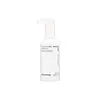What's inside
What's inside
 Key Ingredients
Key Ingredients

 Benefits
Benefits

 Concerns
Concerns

 Ingredients Side-by-side
Ingredients Side-by-side

Isododecane
EmollientDimethicone
EmollientDimethiconol
EmollientTocopherol
AntioxidantGlyceryl Linoleate
EmollientZea Mays Germ Oil
EmollientGlyceryl Oleate
EmollientLinalool
PerfumingHydroxycitronellal
PerfumingBenzyl Salicylate
PerfumingBenzyl Alcohol
PerfumingHexyl Cinnamal
PerfumingCitronellol
PerfumingAlpha-Isomethyl Ionone
PerfumingGlyceryl Linolenate
EmollientCoumarin
PerfumingLimonene
PerfumingParfum
MaskingWater
Skin ConditioningAlcohol Denat.
AntimicrobialPolyglyceryl-10 Laurate
Skin ConditioningButylene Glycol
HumectantParfum
MaskingCaprylyl Glycol
EmollientMenthol
MaskingEthylhexylglycerin
Skin ConditioningChamaecyparis Obtusa Water
MaskingLinalool
PerfumingArginine
MaskingMelaleuca Alternifolia Leaf Oil
AntioxidantCitric Acid
BufferingAlcohol
AntimicrobialLimonene
PerfumingCamellia Sinensis Leaf Extract
AntimicrobialThuja Orientalis Seed Extract
Skin ConditioningPanax Ginseng Root Extract
Emollient1,2-Hexanediol
Skin ConditioningPropanediol
SolventBacillus/Soybean Ferment Extract
Skin ConditioningAcorus Calamus Root Extract
PerfumingTocopherol
AntioxidantChamaecyparis Obtusa Leaf Extract
Skin ConditioningDisodium EDTA
Hydroxypropyl Cyclodextrin
MaskingWater, Alcohol Denat., Polyglyceryl-10 Laurate, Butylene Glycol, Parfum, Caprylyl Glycol, Menthol, Ethylhexylglycerin, Chamaecyparis Obtusa Water, Linalool, Arginine, Melaleuca Alternifolia Leaf Oil, Citric Acid, Alcohol, Limonene, Camellia Sinensis Leaf Extract, Thuja Orientalis Seed Extract, Panax Ginseng Root Extract, 1,2-Hexanediol, Propanediol, Bacillus/Soybean Ferment Extract, Acorus Calamus Root Extract, Tocopherol, Chamaecyparis Obtusa Leaf Extract, Disodium EDTA, Hydroxypropyl Cyclodextrin
Ingredients Explained
These ingredients are found in both products.
Ingredients higher up in an ingredient list are typically present in a larger amount.
Limonene is a fragrance that adds scent and taste to a formulation.
It's found in the peel oil of citrus fruits and other plants such as lavender and eucalyptus. The scent of limonene is generally described as "sweet citrus".
Limonene acts as an antioxidant, meaning it helps neutralize free radicals.
When exposed to air, oxidized limonene may sensitize the skin. Because of this, limonene is often avoided by people with sensitive skin.
The term 'fragrance' is not regulated in many countries. In many cases, it is up to the brand to define this term. For instance, many brands choose to label themselves as "fragrance-free" because they are not using synthetic fragrances. However, their products may still contain ingredients such as essential oils that are considered a fragrance.
Learn more about LimoneneLinalool is a fragrance and helps add scent to products. It's derived from common plants such as cinnamon, mint, citrus, and lavender.
Like Limonene, this ingredient oxidizes when exposed to air. Oxidized linalool can cause allergies and skin sensitivity.
This ingredient has a scent that is floral, spicy tropical, and citrus-like.
Learn more about LinaloolParfum is a catch-all term for an ingredient or more that is used to give a scent to products.
Also called "fragrance", this ingredient can be a blend of hundreds of chemicals or plant oils. This means every product with "fragrance" or "parfum" in the ingredients list is a different mixture.
For instance, Habanolide is a proprietary trade name for a specific aroma chemical. When used as a fragrance ingredient in cosmetics, most aroma chemicals fall under the broad labeling category of “FRAGRANCE” or “PARFUM” according to EU and US regulations.
The term 'parfum' or 'fragrance' is not regulated in many countries. In many cases, it is up to the brand to define this term.
For instance, many brands choose to label themselves as "fragrance-free" because they are not using synthetic fragrances. However, their products may still contain ingredients such as essential oils that are considered a fragrance by INCI standards.
One example is Calendula flower extract. Calendula is an essential oil that still imparts a scent or 'fragrance'.
Depending on the blend, the ingredients in the mixture can cause allergies and sensitivities on the skin. Some ingredients that are known EU allergens include linalool and citronellol.
Parfum can also be used to mask or cover an unpleasant scent.
The bottom line is: not all fragrances/parfum/ingredients are created equally. If you are worried about fragrances, we recommend taking a closer look at an ingredient. And of course, we always recommend speaking with a professional.
Learn more about ParfumTocopherol (also known as Vitamin E) is a common antioxidant used to help protect the skin from free-radicals and strengthen the skin barrier. It's also fat soluble - this means our skin is great at absorbing it.
Vitamin E also helps keep your natural skin lipids healthy. Your lipid skin barrier naturally consists of lipids, ceramides, and fatty acids. Vitamin E offers extra protection for your skin’s lipid barrier, keeping your skin healthy and nourished.
Another benefit is a bit of UV protection. Vitamin E helps reduce the damage caused by UVB rays. (It should not replace your sunscreen). Combining it with Vitamin C can decrease sunburned cells and hyperpigmentation after UV exposure.
You might have noticed Vitamin E + C often paired together. This is because it is great at stabilizing Vitamin C. Using the two together helps increase the effectiveness of both ingredients.
There are often claims that Vitamin E can reduce/prevent scarring, but these claims haven't been confirmed by scientific research.
Learn more about Tocopherol